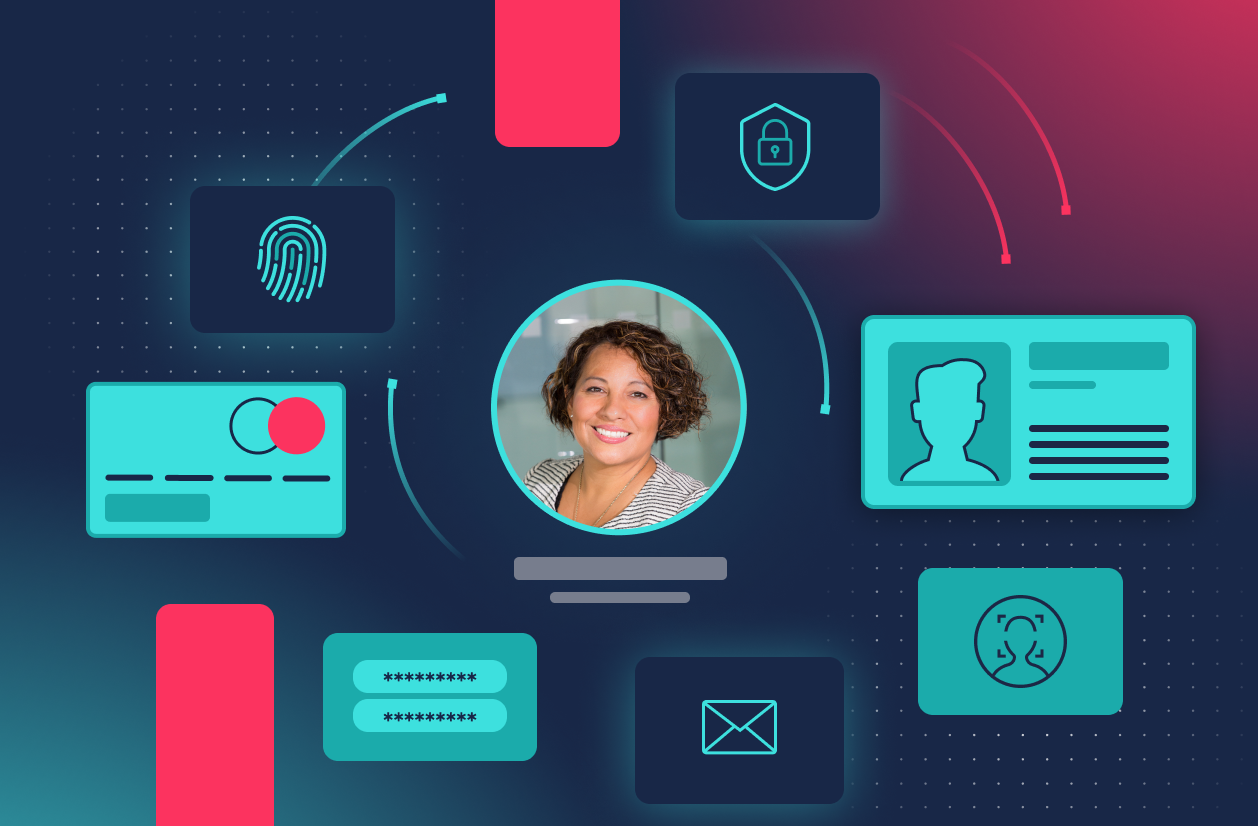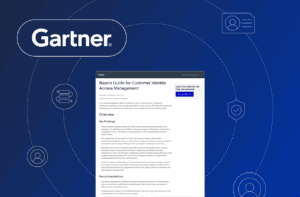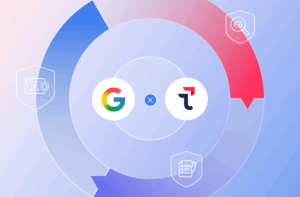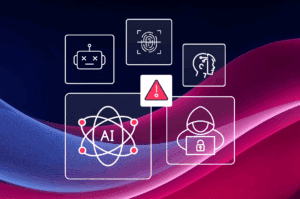Identity orchestration allows organizations to manage a user identity across their various apps and cloud-based services.
While many traditional identity providers can offer a more convenient login experience, there are a few trade-offs to providing a single identity across all systems — mainly reduced threat detection and mitigation.
In this article, we’ll explain how integrating a risk-aware identity orchestration platform can better improve your identity and access management (IAM).
But, first, let’s find out exactly what identity orchestration means.
What is identity orchestration?
Identity orchestration is the process of designing, creating, testing, deploying and maintaining the complete identity and access management experience for customers. It automates behavior across identity systems using connectors, user journeys and app gateways.
It then integrates with the identity systems you’re using through an abstraction layer, so you don’t need to change application code or modify any of the configurations to make them work together.
Once integrated, it can securely manage identities, policies and configurations across systems, routing authentication, verification and step-up requests to the relevant providers.
This is especially useful in complex customer identity environments, multi-cloud and hybrid environments where each environment has a different identity system. These might not interact with each other, which makes it difficult to get visibility and control access.
In such cases, identity orchestration enables an identity-first approach across applications, making user management and identity security easier and more seamless for users.
Required features of an identity orchestration system
Here are some of the integral features that define an identity orchestration system.
- It must be designed to solve distributed problems of complex customer, multi-cloud and multi-identity use cases
- It should be able to manage identity profiles that are consistent across identity systems and make it easier to implement consistent access policies across the identity systems
- It should allow you to design, test, rollout, and iterate user journeys quickly and without dependency on code
- It must bring together fraud signals, risk and trust decisioning, and mitigation controls like various types of authenticators and identity verification technologies
- It must give you real-time visibility to every policy and customer identity journey, across all of your applications and channels in a central location
Challenges of traditional identity management solutions
At this point, you might be wondering why identity orchestration is even required. Can’t traditional identity management solutions do the job adequately?
The short answer is no.
Here are the challenges that traditional identity solutions face in the modern multi-cloud, multi-application environment:
Managing multiple identity systems
If you’re using different identity systems, each with its own attributes, access management policies and authentication systems, you need to manually manage and integrate all of them.
Problems in modernizing apps
If you want to refactor your apps so they are compliant with protocols like Security Assertion Markup Language (SAML) and Open ID Connect (OIDC), you’d need to create custom synchronization code that you’d also need to maintain.
Even moving apps from one identity provider to another means doing it manually, which takes a considerable investment in time and money.
Identity migration problems
Embedding multiple identity solutions into your applications could eventually lead to vendor lock-in. Removing these solutions or replacing them after a few years requires a lot of design, coding, and testing work.
Enterprises are often forced to renew, even if they prefer to replace. By having all the integrations de-coupled from your application, the task of removing or replacing a solution becomes simple and fast.
Inconsistent access policies
When working with different identity systems, you have to deal with each one’s access management policies. Unfortunately, that has historically meant downgrading policies to the lowest common denominator.
That, in turn, can lead to lowered cybersecurity for you and your customers.
Inadequate threat detection
Most common IAM systems don’t have a comprehensive risk detection and trust assessment system. They do offer some device characteristics and activity monitoring, but it is not always adequate.
Poor UX
Most traditional identity systems have to walk the fine line between security and user experience (UX). Since these projects are often managed by security / identity experts, more emphasis is placed on security, rather than on UX. Poor UX leads to customer dissatisfaction and attrition.

How does identity orchestration solve these problems?
If you look at the key features of identity orchestration, you will see how they are designed to solve common problems faced by IAM solutions:
Easier integration with different systems
The most important feature offered by an identity orchestration system is the abstraction layer that enables interaction between multiple identity systems. That means you are no longer beholden to a cloud provider or system. You can interact with different identity systems seamlessly.
Modernization without additional code writing
Since the identity orchestration platform can integrate and get information from legacy identity systems, modernizing apps no longer requires complete rewrites. You can modernize the overlay and workflows while keeping the core architecture the same.
Identity “big bang” migration mitigation
Since there is no need to transfer identity databases, you no longer have to deal with the complexities that come with multiple and complex migration projects. Thus, customers experience business continuity even when you’ve implemented a migration to a different system.
Protocol compliance
If your legacy application does not support SAML or OIDC, an identity orchestrator can help modernize your app without needing complex code changes.
Access policies unification
No matter how many different identity systems you use, an identity orchestration platform will help you manage access policies across all of them. Most importantly, you won’t have to compromise on security to do so.
Tightening security
An identity orchestration software can be deployed across any architecture or identity system and will act as a Zero Trust gateway for more security.
Improving UX
An identity orchestrator allows you to manage consolidated identities across providers, manage access policies and modernize your applications without a complete overhaul. That means you can give your customers high security without compromising on the experience.

The most trusted identity orchestration for customer identity and access management with Transmit Security
Transmit has been in production for over eight years and is used by the largest organizations in the world. We orchestrate hundreds of millions of customer interactions every day, including the most sensitive transactions in the world. We orchestrate the most complex policies reliably and at scale.
Learn MoreQuickly build digital identity journeys with security that enhances user experience and bolsters customer loyalty.
- 100+ pre-built integrations
- Connectors to integrate with your in-house web services
- No-code drag & drop policy and journey building
- Support for multiple use cases, including customer onboarding, login, payments, and more
- The ability to A/B test different customer journeys and deploy them instantly



